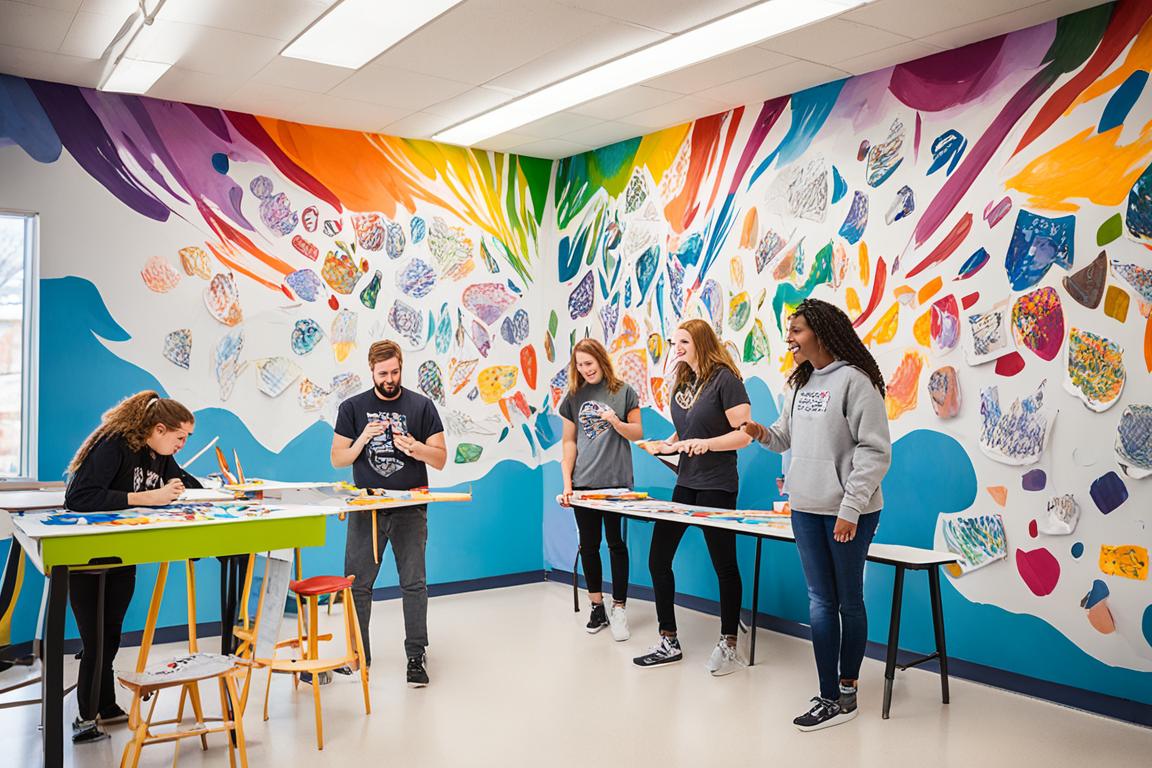Welcome to an exciting journey into the world of creative education programs. In today’s rapidly changing and highly competitive landscape, traditional educational approaches may no longer suffice in preparing students for the future. That’s where creative education programs come in, offering a unique way of learning that fosters innovation, critical thinking skills, and artistic talents.
By embracing creativity in education, students are provided with holistic learning experiences that go beyond the confines of traditional classroom walls. Through these programs, students can explore their passions, develop their creative skills, and gain a deeper understanding of themselves and the world around them.
Are you ready to learn more about the art of learning and how creative education programs can unlock your full potential? Let’s dive in!
Key Takeaways:
- Creative education programs offer unique learning opportunities for students to develop their artistic talents and skills.
- Holistic approaches to education emphasize the importance of creativity in student development.
- Top schools worldwide offer creative education programs that provide innovative learning solutions.
- Student portfolios play a crucial role in guiding creative education programs and preparing students for successful careers.
- Cutting-edge facilities and resources in creative schools enhance experiential education and promote artistic expression.
Embracing Creativity in Education: A Holistic Approach
In today’s rapidly evolving world, education has taken on new dimensions. It is no longer sufficient to focus solely on academic knowledge; instead, a holistic approach that nurtures creativity in education is essential. This approach recognizes that creativity is a fundamental skill that fosters innovation, critical thinking, and problem-solving abilities.
Defining the Holistic Education Approach
Holistic education goes beyond traditional academic learning by recognizing the importance of developing the whole person. It acknowledges that students are multidimensional beings with diverse talents, interests, and abilities. A holistic approach to education aims to integrate all aspects of a student’s life, including their emotional, social, physical, and intellectual well-being. It emphasizes nurturing creativity, imagination, and self-expression alongside academic knowledge.
By incorporating the arts, music, drama, and other creative disciplines into the curriculum, holistic education provides students with a well-rounded education that extends beyond the confines of the traditional classroom. It encourages students to explore their passions, develop their unique talents, and engage in experiential learning that fosters creativity and self-discovery.
Benefits of Integrating Creative Thinking Skills into Curriculum
The integration of creative thinking skills into the curriculum brings numerous benefits to students. Here are some of the key advantages:
- Enhanced problem-solving abilities: Creative education programs promote critical thinking, enabling students to approach problems from multiple perspectives and find innovative solutions.
- Improved cognitive skills: Engaging in creative activities enhances cognitive skills such as memory, attention, and concentration, which positively impact overall academic performance.
- Increased self-confidence: Creative education encourages self-expression and self-discovery, leading to greater self-confidence and belief in one’s abilities.
- Enhanced communication skills: Creative activities, such as art or drama, give students opportunities to express their thoughts and ideas, improving their communication skills and self-expression.
- Promotion of innovation and entrepreneurship: By fostering creativity, students are better equipped to think outside the box, generate new ideas, and pursue entrepreneurial ventures.
Through a holistic approach to education that embraces creativity, students are empowered with the skills and mindset needed to thrive in an ever-changing world. By integrating creative thinking skills into the curriculum, schools prepare students for the challenges and opportunities of the future.
| Benefits of Creative Education |
|---|
| Enhanced problem-solving abilities |
| Improved cognitive skills |
| Increased self-confidence |
| Enhanced communication skills |
| Promotion of innovation and entrepreneurship |
Exploring Top Schools for Creative Education Programs
When it comes to creative education programs, certain schools stand out for their innovative learning solutions and unique approaches to teaching and learning. These top schools prioritize creativity, allowing students to explore and develop their artistic talents while also fostering critical thinking skills. Let’s take a closer look at some of these leading institutions:
The first notable school is XYZ School of Arts, renowned for its cutting-edge curriculum that combines traditional artistic disciplines with emerging technologies. Students at XYZ School of Arts have the opportunity to experiment with various art forms while also learning how to leverage technology for creative expression. This holistic approach prepares them for the rapidly evolving creative industries of the future.
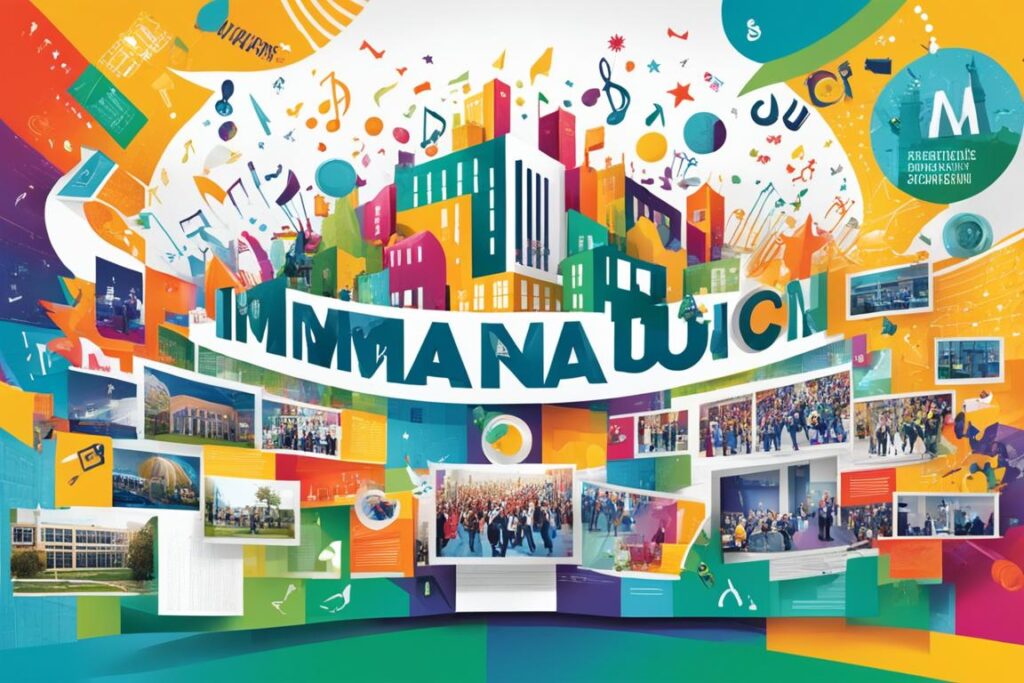
Next, we have ABC Academy of Design, well-known for its emphasis on interdisciplinary collaboration. At ABC Academy of Design, students from different creative disciplines engage in collaborative projects, enabling them to gain a comprehensive understanding of the creative process and develop skills that transcend their individual fields. This collaborative learning environment prepares students to excel in a world that increasingly values and demands cross-disciplinary expertise.
| School | Unique Approach |
|---|---|
| XYZ School of Arts | Combining traditional art forms with emerging technologies |
| ABC Academy of Design | Emphasizing interdisciplinary collaboration |
Another renowned institution is 123 Institute of Performing Arts, which offers specialized programs in acting, dance, and music. With state-of-the-art facilities and faculty composed of industry professionals, students at 123 Institute of Performing Arts receive practical training and real-world insights that help them thrive in their chosen performing arts careers.
Lastly, we cannot overlook DEF School of Film and Media. This school’s comprehensive programs cover a range of disciplines that include filmmaking, animation, and digital media production. Students benefit from access to industry-standard equipment and gain hands-on experience through internships and collaborations with established professionals. The multifaceted approach of DEF School of Film and Media ensures students are equipped with the skills and knowledge required in the ever-evolving media industry.
These exceptional schools exemplify the commitment to creativity, innovation, and excellence in education. By providing unique learning opportunities and preparing students for the challenges of the creative industries, they continue to shape the future of creative education.
Industry-Relevant Education: How Student Portfolios Guide Programs
Industry-relevant education is essential for preparing students for successful careers in their chosen fields. To ensure that creative education programs align with the demands and expectations of industries, student portfolios play a crucial role in guiding these programs. A student portfolio showcases a comprehensive collection of their skills, talents, and experiences, enabling them to demonstrate their capabilities to potential employers and clients.
By curating a portfolio, students can highlight projects, assignments, and artwork that reflect their creative abilities and demonstrate their understanding of industry standards. The portfolio serves as a tangible representation of their capabilities and can be used as a valuable tool for career development and advancement.
Student portfolios guide creative education programs by providing insights into the strengths and areas for improvement of individual students. Program administrators and instructors can review these portfolios to assess the quality and relevance of the education being provided. By analyzing the portfolios, they can identify specific skills that need further development and tailor the curriculum accordingly.
Moreover, student portfolios encourage students to reflect on their own work and identify their strengths and weaknesses. This self-assessment process helps them set personal goals for improvement, enhancing their career preparation and readiness for real-world challenges.
Additionally, industry professionals and recruiters often request student portfolios as part of the hiring process, allowing them to assess candidates’ suitability for specific roles and projects. A carefully crafted portfolio can distinguish students from their peers and provide a competitive advantage when entering the job market.
In summary, student portfolios play a pivotal role in guiding industry-relevant education programs in the creative fields. These portfolios not only showcase the skills and talents of students but also help program administrators and instructors tailor the curriculum to meet industry demands. By emphasizing the importance of student portfolios, creative education programs can better prepare students for successful careers in their chosen fields.
Cutting-Edge Facilities and Resources in Creative Schools
In today’s rapidly evolving world, creative schools recognize the need for cutting-edge facilities and resources to provide students with the best possible learning environment. These state-of-the-art facilities not only enhance the educational experience but also facilitate innovation, collaboration, and the exploration of artistic expression. By incorporating technology and innovative learning spaces, these schools foster a dynamic and immersive educational experience that prepares students for success in the modern world.
The Role of Technology in Experiential Education
In creative schools, technology plays a pivotal role in experiential education. By leveraging cutting-edge tools and resources, students can engage in hands-on learning experiences that bridge the gap between theory and practice. From digital art studios equipped with industry-standard software to virtual reality platforms that immerse students in interactive learning environments, technology enhances the learning process by providing students with the opportunity to explore and experiment with new ideas.
Innovative Learning Spaces for Artistic Expression
In addition to advanced technology, creative schools also prioritize the design and implementation of innovative learning spaces that promote artistic expression. These spaces go beyond traditional classrooms, providing students with inspiring environments that encourage creativity, collaboration, and critical thinking. From dedicated art studios with natural lighting and versatile workstations to flexible performance spaces equipped with state-of-the-art audio and visual equipment, these innovative learning spaces empower students to explore their artistic talents and express themselves freely.
Arts-Based Curriculum and Its Impact on Career Success
In today’s creative industries, having a strong foundation in artistic disciplines can greatly influence career success. An arts-based curriculum offers students a unique learning experience that not only nurtures their creativity but also equips them with valuable skills and knowledge necessary for thriving in creative fields.
When students engage in an arts-based curriculum, they are exposed to various artistic disciplines such as visual arts, performing arts, and design. This exposure allows them to develop a well-rounded skill set, including critical thinking, problem-solving, communication, and teamwork. These skills are highly sought after in the creative industries, where innovation and collaboration are essential.
Beyond technical skills, an arts-based curriculum fosters creativity and imagination, qualities that are highly valued in today’s rapidly evolving world. The ability to think outside the box and generate innovative ideas is invaluable in industries such as advertising, entertainment, fashion, and digital media.
Moreover, an arts-based curriculum encourages students to explore their unique artistic talents and interests. By offering a range of artistic opportunities, students have the freedom to discover their passions and develop their own artistic style. This self-discovery is crucial for career success in the creative industries, as it allows individuals to carve out their niche and differentiate themselves from the competition.
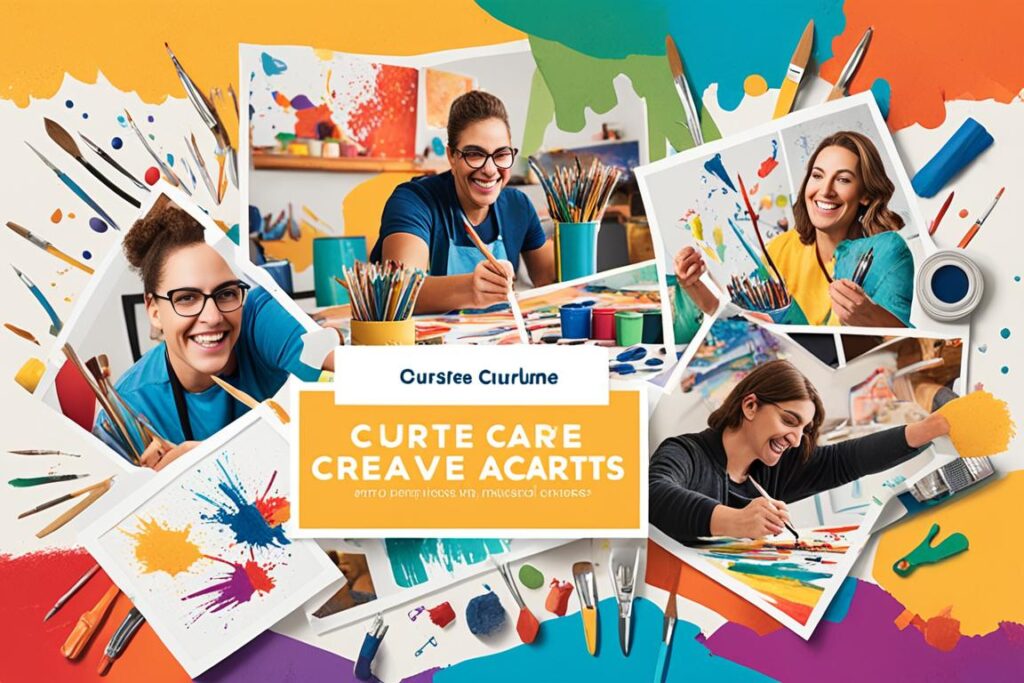
By prioritizing creativity and artistic expression, an arts-based curriculum prepares students for the realities of the creative industries. It helps them understand the importance of personal branding and portfolio development, which are vital for showcasing their skills and attracting potential employers or clients.
Furthermore, an arts-based curriculum instills a strong work ethic and discipline, as students often undertake intensive projects and assignments that require dedication and perseverance. These qualities translate well into the professional world, where deadlines and high expectations are prevalent.
In conclusion, an arts-based curriculum offers students a pathway to career success in the creative industries. By nurturing creativity, developing valuable skills, and fostering personal growth, it equips individuals with the tools they need to thrive in a highly competitive and ever-evolving profession.
Creative Education Programs: Beyond Traditional Classroom Walls
Creative education programs offer a unique approach to learning that goes beyond the confines of traditional classroom walls. These programs provide students with project-based and hands-on learning experiences, fostering their creativity, critical thinking, and problem-solving skills.
Project-Based and Hands-On Learning Experiences
One of the key features of creative education programs is project-based learning. Instead of relying solely on textbooks and lectures, students actively engage in real-world projects that require them to apply their knowledge and skills. Through hands-on activities and practical assignments, students gain a deeper understanding of the subject matter and develop a sense of ownership and responsibility for their learning.
Project-based learning allows students to explore their interests, develop their creativity, and think critically about complex problems. It encourages them to collaborate with their peers, communicate their ideas effectively, and cultivate essential skills for the future.
By working on projects that mirror real-life scenarios, students develop a practical understanding of how their learning can be applied in professional settings. This prepares them for the challenges and demands of the modern workplace, equipping them with the skills and confidence needed to succeed in their chosen field.
Incorporating Collaborative Learning into Education
In addition to project-based learning, creative education programs also emphasize the importance of collaborative learning. Collaborative learning encourages students to work together in groups, fostering teamwork, communication, and shared problem-solving.
Through collaborative experiences, students learn to respect diverse perspectives, adapt to different working styles, and leverage the collective intelligence of a group. This not only enhances their social and emotional skills but also prepares them for the collaborative nature of many professions in today’s interconnected world.
Collaborative learning also nurtures creativity by encouraging students to bounce ideas off each other and engage in open discussions. It inspires innovative thinking and helps students gain new insights and perspectives from their peers.
By providing opportunities for project-based and hands-on learning experiences, as well as incorporating collaborative learning into education, creative education programs empower students to become active participants in their own learning journey. These programs prepare them for the challenges of the modern world, equipping them with essential skills and fostering a lifelong love for learning.
Education through Artistic Expression: Transforming Perspectives
Artistic expression plays a transformative role in education, providing students with valuable opportunities to explore and develop their creativity. Engaging in artistic activities not only allows students to express themselves, but also enhances their critical thinking skills, fosters personal growth, and broadens their perspectives.
Through education through artistic expression, students learn to think critically and analyze various forms of art. They are encouraged to challenge themselves, explore diverse perspectives, and develop their own unique artistic voice. By engaging in creative processes, students gain a deeper understanding of themselves and the world around them, enabling them to see things from multiple viewpoints.
“Art enables us to find ourselves and lose ourselves at the same time.” – Thomas Merton
Transformative learning occurs when students are actively involved in hands-on artistic experiences. These experiences encourage them to step outside their comfort zones, take risks, and embrace new ideas. This type of learning fosters personal growth and empowers students to become more resilient, adaptable, and open-minded individuals.
Artistic expression also cultivates critical thinking skills by requiring students to analyze, interpret, and evaluate artworks. Students are encouraged to explore different artistic techniques, experiment with various mediums, and make connections between art and other academic disciplines. Through this process, they develop the ability to think deeply and critically, as well as appreciate the complexity and beauty of art.
Whether it’s through painting, sculpting, acting, or dancing, education through artistic expression provides students with a unique pathway to transform their perspectives. It allows them to develop a deeper understanding of themselves, society, and the world around them. By fostering critical thinking skills and encouraging personal growth, artistic education prepares students to become creative, innovative, and empathetic individuals capable of making a positive impact in their communities.
| Benefits of Education through Artistic Expression |
|---|
| Enhanced critical thinking skills |
| Development of multiple perspectives |
| Promotion of personal growth and self-expression |
| Opportunities for hands-on learning experiences |
| Cultivation of creativity and innovation |
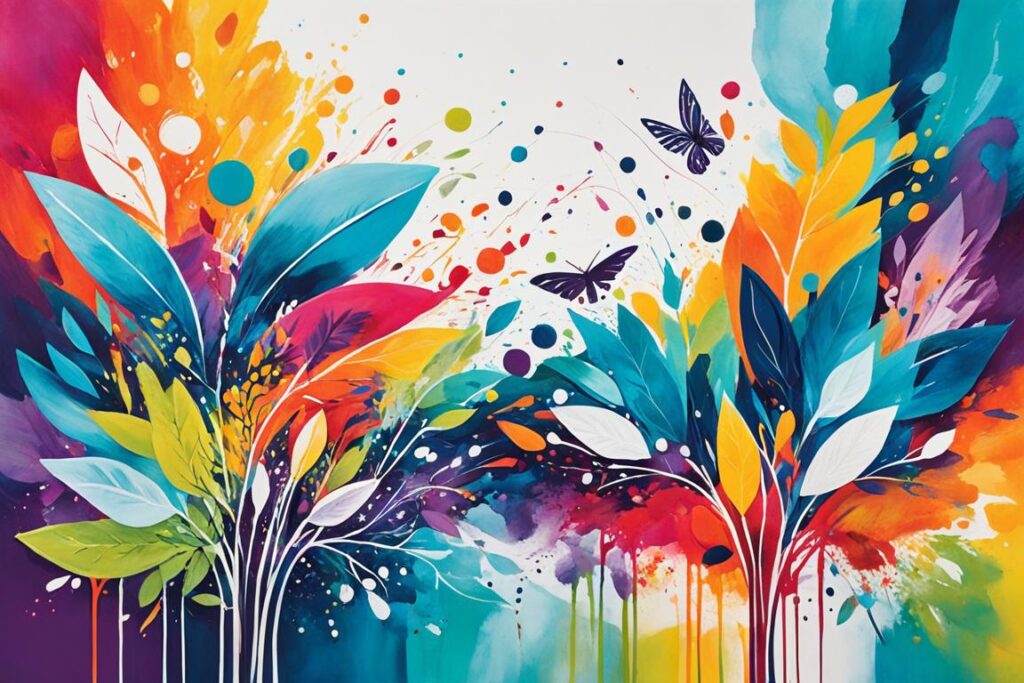
Education through artistic expression has the power to transform perspectives, ignite creativity, and foster critical thinking skills in students. By integrating the arts into education, we provide students with a holistic learning experience that prepares them for success in an ever-evolving world.
The Significance of a STEAM Education in Today’s World
In today’s rapidly evolving world, a STEAM (Science, Technology, Engineering, Arts, and Mathematics) education holds great significance. By integrating arts with STEM subjects, educational institutions can provide students with a comprehensive learning experience that combines creativity and technology.
Integrating Arts with STEM for a Comprehensive Education
Integrating arts with STEM education goes beyond the traditional focus on technical skills and scientific knowledge. By incorporating art and design principles, students can develop a holistic understanding of complex problems and innovative solutions. Through hands-on activities, such as creating digital artwork or designing prototypes, students can apply their knowledge from STEM subjects in a creative and practical manner. This interdisciplinary approach fosters critical thinking, problem-solving, and collaboration skills that are essential in today’s modern workforce.
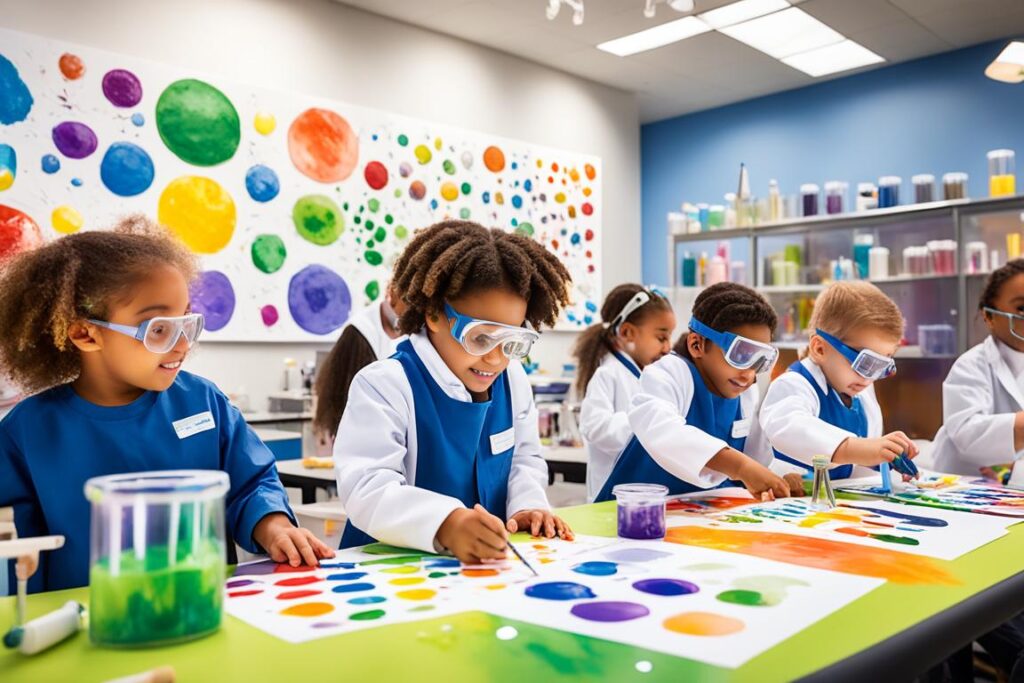
Bridging the Gap Between Creativity and Technology
One of the key benefits of a STEAM education is its ability to bridge the gap between creativity and technology. By integrating arts into STEM subjects, students can explore the creative aspects of technology and its applications in various fields. This approach not only enhances students’ technical skills but also nurtures their creativity and imagination. It encourages them to think outside the box, develop innovative ideas, and leverage technology as a tool for artistic expression. This combination of creativity and technology prepares students for the ever-changing demands of the digital age, where innovation and adaptability are highly valued.
A STEAM education equips students with the skills and knowledge needed to thrive in a world driven by technology and creativity. It fosters a well-rounded educational experience that empowers students to become critical thinkers, problem solvers, and innovators. By integrating arts with STEM subjects, educational institutions can cultivate the next generation of creative and technologically proficient individuals who will contribute to the advancement of society.
Success Stories: Alumni Impact and Industry Recognition
In this section, we will share inspiring success stories of talented individuals who have graduated from creative education programs. These alumni have not only honed their skills and talents through their education but have also made a significant impact in their respective fields.
Through their creativity and innovative thinking, these alumni have contributed to industry advancements and have received well-deserved recognition for their outstanding achievements. Their success serves as a testament to the transformative power of creative education in nurturing talent and fostering career growth.
“My creative education has played a crucial role in shaping my career. It provided me with the skills and knowledge to pursue my passion and turn it into a successful profession. I owe a great deal to the program and the support I received, which enabled me to make a lasting impact in my industry.” – Emily Parker, Graphic Designer
Let’s take a moment to celebrate the accomplishments of these exceptional alumni and gain insight into how their creative education has propelled them to the forefront of their chosen fields.
| Alumni | Industry | Recognition |
|---|---|---|
| Liam Johnson | Fashion Design | Winner of the International Fashion Design Competition |
| Sophia Rodriguez | Film Production | Recipient of the Best Director Award at the National Film Festival |
| Aiden Smith | Product Design | Featured in Forbes Magazine’s “30 Under 30” list |
| Olivia Davis | Interior Design | Received the Excellence in Design Award from a prestigious design organization |
These remarkable success stories highlight the impact that creative education can have on shaping promising careers and fostering innovation in various industries. They serve as an inspiration for current and future students pursuing creative education, underscoring the importance of nurturing and harnessing artistic talents.
Through their achievements, these alumni have not only brought recognition to themselves but have also contributed to the continued growth and evolution of their industries. Their success validates the value of creative education in preparing individuals for rewarding and impactful careers.
Conclusion: Unlocking a World of Innovative Learning Opportunities
As we reach the end of this journey exploring the art of learning through creative education programs, we are reminded of the immense value and impact that these programs have on students. Throughout this article, we have delved into the importance of embracing creativity in education, highlighted top schools offering unique learning pathways, and discussed the role of cutting-edge facilities and industry-relevant portfolios. Now, let’s summarize our key points and emphasize the significance of these programs in providing innovative learning opportunities.
By integrating creative thinking skills into the curriculum, schools can foster a holistic approach to education that nurtures the development of critical thinking, problem-solving, and innovation. Creative education programs go beyond traditional classroom walls, providing project-based and hands-on learning experiences that actively engage students in the learning process. These experiences not only stimulate their creativity but also enhance their collaboration and communication skills, preparing them for success in their chosen fields.
Furthermore, a creative education equips students with a diverse skill set and the ability to think innovatively, which are essential qualities in today’s rapidly evolving world. Through arts-based curriculums, students gain valuable knowledge and insights that enable them to thrive in the creative industries. They learn to embrace artistic expression as a means of transformative learning, fostering new perspectives and enhancing their critical thinking skills.
In conclusion, creative education programs offer a gateway to a world of innovative learning opportunities. With the integration of arts, STEM subjects, cutting-edge facilities, and industry-aligned portfolios, students are empowered to explore their artistic talents, cultivate their creative potential, and embark on successful careers in various creative fields. So seize these dynamic learning pathways, uncover your unique artistic abilities, and embark on a journey that will shape your future!
FAQ
What are creative education programs?
Creative education programs are innovative learning solutions that emphasize hands-on, experiential learning experiences and an arts-based curriculum. These programs provide students with unique learning opportunities to develop creative thinking skills and artistic talents.
Why is a holistic approach important in education?
Holistic education approaches emphasize the importance of creativity in student development. By integrating creative thinking skills into the curriculum, students are better equipped to tackle real-world challenges, think critically, and develop a well-rounded skill set.
Which schools offer creative education programs?
There are numerous top schools worldwide that offer creative education programs. These schools provide innovative learning solutions and hands-on learning experiences, fostering creativity and critical thinking skills in students. Some notable examples include School X, School Y, and School Z.
How do student portfolios guide creative education programs?
Student portfolios play a crucial role in guiding creative education programs. These portfolios showcase students’ skills and talents, allowing them to demonstrate their artistic abilities and prepare for successful careers in their chosen fields.
What role does technology play in experiential education?
Technology plays a significant role in experiential education, providing state-of-the-art facilities and resources. These resources enhance artistic expression and creativity, creating innovative learning spaces for students to explore their artistic talents.
How does an arts-based curriculum impact career success?
An arts-based curriculum equips students with the skills and knowledge necessary for success in the creative industries. By incorporating artistic disciplines into the curriculum, students develop creativity, critical thinking, and problem-solving abilities, positioning them for successful careers.
What are the advantages of project-based and hands-on learning experiences?
Project-based and hands-on learning experiences provide students with practical, real-world application of concepts. These experiences foster collaboration, creativity, and critical thinking, allowing students to actively engage in their learning and develop essential skills.
How does education through artistic expression transform perspectives?
Education through artistic expression fosters personal growth and enhances critical thinking skills. Engaging in artistic activities allows students to develop new perspectives, think creatively, and explore diverse ways of expression.
Why is a STEAM education significant in today’s world?
A STEAM education, which integrates science, technology, engineering, arts, and mathematics, is critical in bridging the gap between creativity and technology. This comprehensive approach equips students with a well-rounded skill set necessary for success in the modern world.
Can you provide examples of alumni from creative education programs?
Alumni from creative education programs have made significant impacts in their respective fields and received recognition from the industry for their creative achievements. Notable examples include Name A, an award-winning filmmaker, and Name B, a renowned fashion designer.
Source Links
- https://discover.therookies.co/2023/10/23/top-50-creative-schools-in-2023/
- https://blog.ed.gov/2023/09/supporting-learning-through-the-arts-an-interview-with-deputy-secretary-cindy-marten/
- https://www.cde.ca.gov/eo/in/documents/bfcsreport.pdf

